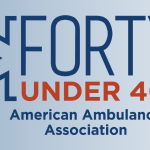The House VA Committee hearing started at 7:30 p.m., but it was well-attended and lasted until 10 p.m. The witnesses included Senator John McCain (R-AZ), VA Secretary David Shulkin, and representatives of the VA Office of Inspector General and the Government Accountability Office. Senator McCain and Secretary Shulkin were both warmly welcomed by Members of the Committee on a bipartisan basis.
Chairman Roe (R-TN) emphasized the need to act quickly to extend the authorization for the Veterans Choice Program, which expires on August 7. To that end, the House VA Committee is voting today on a bill to eliminate the sunset of the program’s authorization. In addition, the Committee will consider broader legislation later this year to make comprehensive reforms to the Choice Program. He noted that the VA has additional funds available but will not be able to spend them once the authorization expires. A copy of Chairman Roe’s opening statement is available here.
Secretary Shulkin testified in support of extending the Choice Program, and he clarified that the VA was not seeking additional funding – just the authority to spend funds already obligated. He noted that the VA already is being forced to deny Choice Program coverage to veterans whose episodes of care would extend beyond the August 7 expiration date (e.g., pregnancy).
Secretary Shulkin also urged Congress to support the VA’s efforts to bring appointment scheduling in-house for care coordination purposes. However, the VA OIG witness noted challenges in records going out to community-based providers and coming back to the VA. The GAO witness also underscored the need for the VA to have better systems in place in order to effectively coordinate care, which will take time to procure and implement. Rep. Brownley (D-CA) echoed that point, calling the VA’s information technology systems a “Model T in a Tesla world.” Rep. Esty (D-CT) also urged improvements in the VA’s information systems and expressed concern that veterans are being improperly billed.
Other Members, including Rep. Wenstrup (R-OH) and Rep. Poliquin (R-ME), raised concerns about continuing delays in the processing of claims and payments to providers. Secretary Shulkin agreed that providers deserve to be paid for their services, noting his own experience as a physician in the private sector. He acknowledged that the VA is not processing enough claims electronically today, and he advised that he plans to pursue options outside the VA for systems procurement going forward.
Many Members also raised serious concerns about treatment of PTSD and mental health conditions for veterans, including Rep. Wenstrup (R-OH), Rep. O’Rourke (D-TX), Rep. Sablan (D-MP), Rep. Banks (R-IN), Rep. Rutherford (R-FL) and Rep. Takano (D-CA). Rep. O’Rourke emphasized that suicide among veterans is the most serious crisis, and Secretary Shulkin agreed that it is his number one priority. The Secretary announced that the VA will begin providing urgent mental health care that also will include individuals other than those service members who were honorably discharged. He added that the VA needs 1,000 more mental health providers, as well as telemental health services, and is looking to expand community partnerships to address suicide.
Rep. Banks noted interest among Indiana veterans in greater access to alternative treatments for PTSD and traumatic brain injury. Secretary Shulkin underscored that he is “most concerned about areas like PTSD, where we do not have effective treatments.” He also advised that the VA has established an “Office of Compassionate Innovation” (separate from the VA’s Center for Innovation), which will focus on finding new approaches to health and physical wellness and explore alternative treatment options for veterans when traditional methods fall short.
Rep. Wenstrup inquired about the VA’s GME and residency programs, as well as its associations with academic institutions. Secretary Shulkin responded that the VA is “doubling down” on partnerships with academic medical institutions.
Chairman Roe concluded his remarks by emphasizing the need to extend the Choice Program authorization soon and to consolidate the VA’s community-based care programs. He also expressed support for the VA’s decision to stop developing its own information technology internally.



